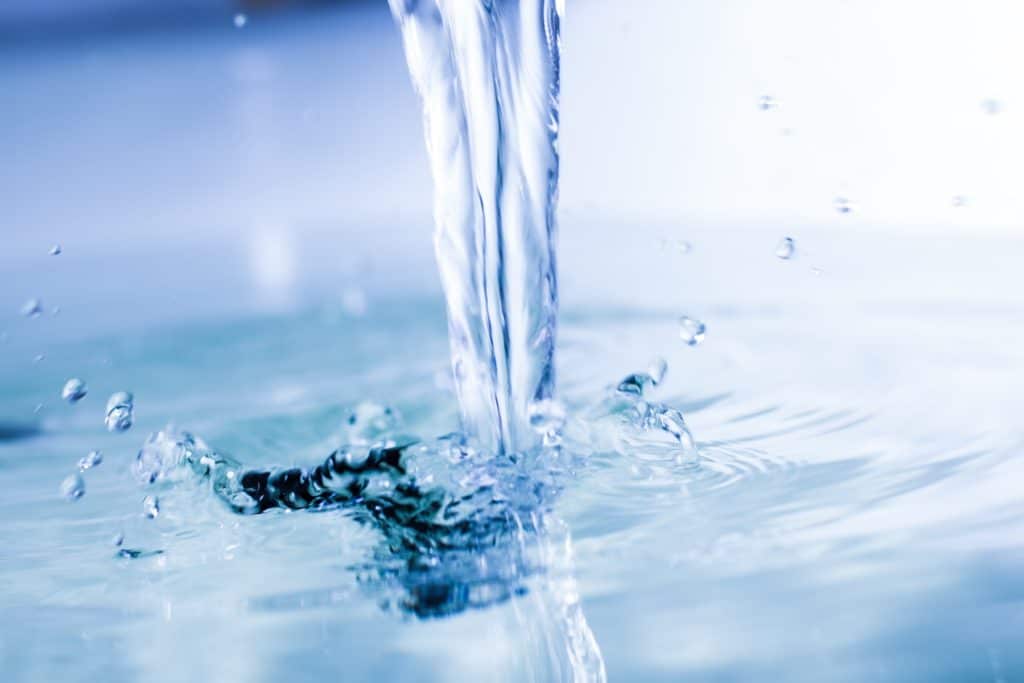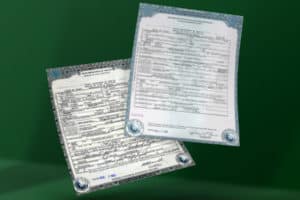Nearly every industry is undergoing an eco-friendly transformation. As the evidence for climate change mounts and projections worsen, more and more people don’t just want greener options. They are demanding them.
In recent years a number of states have legalized the use of water cremation, a form of disposition that is considered to be greener than traditional methods of burial and cremation. Water cremation is known by many names; alkaline hydrolysis, aquamation, green cremation and resomation. No matter what you call it, the process is gentler on the environment from start to finish.
In This Article
- How water cremation works.
- How water cremation compares to traditional flame-based cremation.
- The benefits of water cremation.
- How much does water cremation cost?
- The legalities surrounding water cremation.
- What the future holds for alkaline hydrolysis.
Alkaline Hydrolysis: How the Process Works
How Water Cremation Got Started
Alkaline hydrolysis was developed in the 1990s in Europe. There was an outbreak of mad cow disease, and water cremation was used to dispose of cows that had been infected. Then in the mid-2000s, alkaline hydrolysis was adopted by medical schools as the means of disposing human and animal remains.
Alkaline hydrolysis was eventually legalized for use in Minnesota funeral homes in 2003. That began a ripple effect, and by the end of 2021 twenty states had legalized water cremation.
How Water Cremation Works
The alkaline hydrolysis process breaks the chemical bonds that hold the body’s proteins together. This process directly replicates the effect of naturally occurring decomposition of traditional earthen burials. However, at the end of water cremation, the body has been returned to its constituent elements – amino acids, peptides, sugars, and salts – all of which is suspended in the water.
The Alkaline Hydrolysis Chamber
The water cremation process involves a stainless steel chamber that’s filled with an alkali mixture that contains water and potassium hydroxide. The chamber has heating mechanisms that allow the solution’s temperature to be elevated as pressure builds inside the chamber.
The first commercial alkaline hydrolysis chamber was made by Resomation Ltd in 2007. It was called the Resomator Unit.
What Happens Before, During and After Hydrolysis?
The deceased will be dressed or wrapped in a material made of natural fiber, before being placed in the chamber. Once the body is inside the chamber, it’s filled with approximately 80 gallons of an alkali solution that’s 5% potassium hydroxide and 95% water.
This solution is completely safe for people and the environment. Despite objections and the personal opinion of opponents, the leftover solution after water cremation is safe enough to pour down the sink. In fact, the ingredients of the alkali solution can be found in liquid soap. And the liquid from the soft tissue is nontoxic and natural. It consists of amino acids, peptides, soap and sugars.
During the cremation the alkali solution is heated to 300 – 350 degrees Fahrenheit and the pressure is increased. The temperature is high enough to kill bacteria. It also dissolves the soft tissue of the body leaving only the bones behind.
What Do Water Cremation Remains Look Like?
The bone fragments that are left behind are soft and very white, much more so than the bones that remain after flame cremation. These bones are crushed into a fine powder, and that is the cremains that the next of kin will receive.
How is the Remaining Solution Disposed?
Because the remaining solution is sterile it can be safely disposed of by pouring it down the drain into the sewage system. It’s this part of the process that many people object to. It’s hard for people to stomach the fact the dissolved tissue is in the water that’s processed at wastewater plants.
Ironically, this procedure is actually the same way blood and fluids are disposed of during the embalming process before most traditional burials.
Benefits of Alkaline Hydrolysis
Many of the benefits of water cremation are the same or similar to those of a regular cremation.
Water Cremation is the most environmentally friendly method of cremation available. It offers several environmental advantages 🌎 over traditional burial or flame-based cremation services.
- Overall, the end-to-end process uses 90% less energy than traditional flame cremation.
- Few to no harmful toxins are released into the atmosphere.
- No toxins, metals or embalming fluid is put in the ground.
- Medical implants are removed after cremation. They can be returned to the family or medically recycled, ensuring the mercury they contain is never released into the air.
- Water cremation is safer for the operator and the community due to the lack of flames.
- Helps solve the problem of overcrowded cemeteries and lack of burial plots.
- Land is conserved by choosing water cremation.
- Water cremation produces around 30% more cremains than flame-based cremation.
Water Cremation vs Flame Cremation
There are a few similarities between water cremation 🌊 and flame cremation 🔥, but there are a number of key differences.
| Similarities | Differences |
|---|---|
| Both types of cremation require about the same amount of time (2-3 hours). | Water cremation uses one-seventh of the energy it takes for cremation with fire. |
| Similar to flame-based cremation, there is no DNA to link back to the person at the end of water cremation. | Flame cremation requires the heat of around 1800 degrees. Only about 300 degrees are necessary for water cremation. |
| The only solid remains are the bones, which are then pulverized and returned to the family as cremains. | While flame cremation produces carbon dioxide equivalent to a 1,000-mile car ride, water cremation does not release any airborne toxins. But it still releases much more into the atmosphere than alkaline hydrolysis. |
| Mercury vapors aren’t released during water cremation either. Plastic and metal objects like breast implants and artificial hips, aren’t destroyed during water cremation. They are separated out from the remaining bones. |
Different Looking Cremains
Both types of cremation leave behind the bone, but because the process is different the bones don’t quite look the same. After water cremation the bones are pure white. The flames of traditional cremation can leave the bones with a gray tinge. The water cremation bones are also softer and can be crushed into a fine powder, unlike the dried out bones of flame cremation, which become cremains with a gritty texture. ⚱️
Water Cremation Costs
Newer technology tends to cost more, but alkaline hydrolysis is still highly affordable compared to the alternatives.
The cost of water cremation is close to the cost of a traditional cremation. Generally speaking, families can expect to pay between $2,000 and $3,000 for water cremation. That’s much lower than the cost of a burial, and the prices could go down as more people utilize the service.
Why Isn’t Water Cremation Legal in All 50 States?
Already 20 states have legalized water cremation, and many others are in the process of legalizing it. 🗽 The problem is, legalization is delayed or blocked in some states. Often the problem is conflicting interests and the personal opinions of politicians.
Some supporters believe the reason for the reluctance to legalize water cremation is a lack of understanding. This is partly due to how the process has been depicted in popular culture, along with a few other factors.
The Disposal Method
As noted above, some people have a problem with how the alkaline hydrolysis solution is disposed of through the sewage system. Even though it’s perfectly safe, there is an “ick factor” that turns people off to the idea of cremating with water. Just the color of the post-cremation fluid isn’t appealing to some people because it’s a syrupy brown liquid that smells like ammonia. Others feel that “pouring a person down the drain” is not respectful.
Resistance From Religious Leaders
Religion has played a large role in the legalization of alkaline hydrolysis. Some religious leaders have stated they believe water cremation is not the proper way to dispose of a person’s body, and within their religions they’ve banned the practice. At the same time water cremation advocates have pointed out that some religions encourage burial because the church is more involved in that process. They also note that religions opposed traditional cremation when it became more common practice.
What the Future Holds for Water Cremation
As with traditional cremation, the stigma of alkaline hydrolysis will likely continue to decline as more people become familiar with the process and its benefits. As time goes by, it will become more acceptable to the general public.
Concern over the environment and the impact of funeral services will also encourage adoption of water cremation in more states. It’s reasonable to assume alkaline hydrolysis will be legal in all 50 states in the foreseeable future.
If you’d like to know more about the water cremation process or you would like to arrange alkaline hydrolysis in Texas, you can contact our team any hour of the day.






